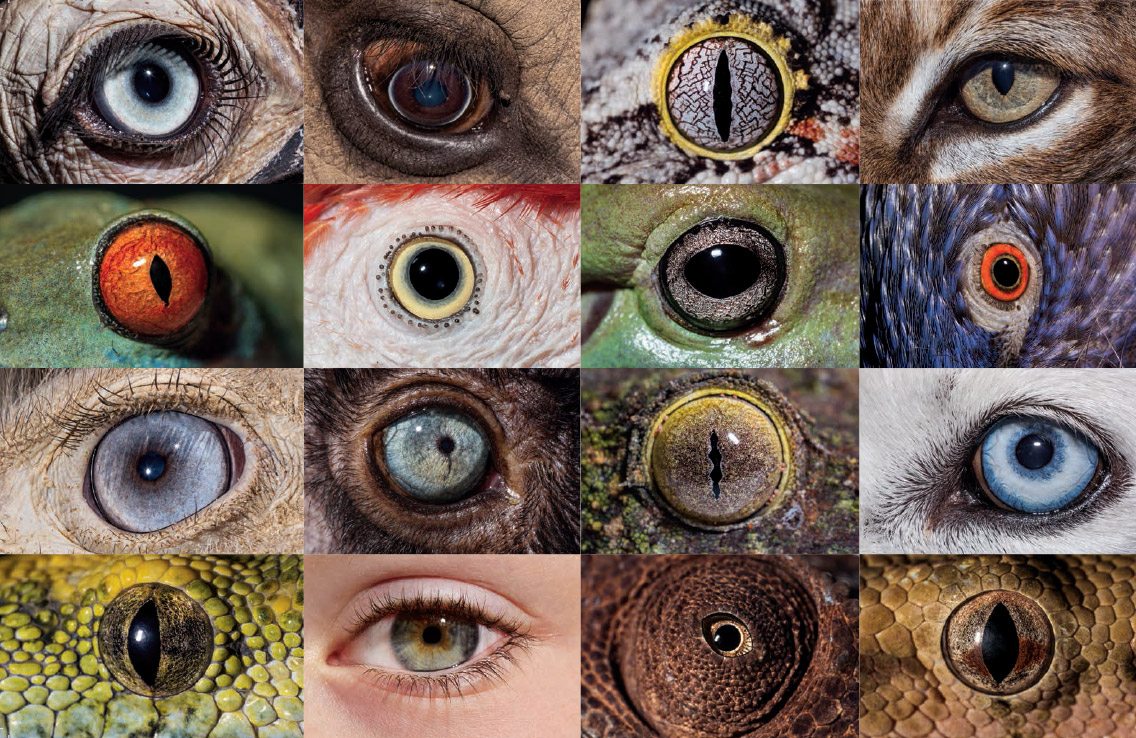
Through Their Eyes: A Glimpse into How Animals See the World
The diversity of the animal kingdom is astounding, not only in terms of species and behavior but also in the way animals perceive the world around them. Each species has evolved unique sensory adaptations that shape their vision and influence how they interact with their environments. In this exploration, we’ll delve into the fascinating realm of how animals see, uncovering the extraordinary ways in which their visual systems differ from our own.
Humans as a Reference Point
To understand how animals see, it’s helpful to begin with our own vision as a reference point. Humans are classified as trichromatic, possessing three types of cone cells that respond to different wavelengths of light—short (blue), medium (green), and long (red). This enables us to perceive a broad spectrum of colors and detail in our surroundings. However, the animal kingdom offers a diverse array of visual systems, each adapted to the specific needs of different species.
Ultraviolet Vision
While humans are mostly limited to the visible spectrum of light, some animals, such as bees and birds, can perceive ultraviolet (UV) light. These creatures have specialized photoreceptor cells that allow them to see a range of colors beyond human perception. For bees, ultraviolet vision is crucial for locating nectar in flowers, as many flowers have distinct UV patterns that guide pollinators to their rewards.
Infrared Sensitivity
Certain snakes, such as pit vipers, possess a unique sensory adaptation known as infrared vision. Specialized pits on their faces can detect heat emitted by prey, enabling them to “see” in complete darkness. This remarkable adaptation helps these predators hunt in low-light conditions, showcasing how animals have evolved diverse visual systems to suit their ecological niches.
Monochromatic Vision
Dogs, cats, and many nocturnal animals have a predominantly monochromatic vision, meaning they see the world in shades of gray and blue. Their eyes contain fewer cone cells, emphasizing rod cells that are more sensitive to low light. This adaptation enhances their ability to navigate and hunt in low-light conditions, providing a distinct advantage in environments where color vision may be less critical.
Motion Detection
The ability to detect motion is crucial for many animals, particularly those with a prey or predator lifestyle. Animals like frogs and certain insects, such as dragonflies, have specialized visual adaptations that prioritize motion detection. This allows them to swiftly respond to movement in their surroundings, whether it’s the approach of a potential meal or an impending threat.

360-Degree Vision
Some prey animals, like rabbits and horses, have eyes positioned on the sides of their heads, providing a panoramic field of view. This adaptation enables them to detect predators from nearly every angle, minimizing blind spots. In contrast, predators often have forward-facing eyes for improved depth perception, crucial for accurately gauging distances when stalking prey.
Color Blindness
Color blindness is not exclusive to humans; certain animals also experience variations in color vision. For instance, most mammals, including dogs, are dichromatic, meaning they have only two types of cone cells and perceive a more limited range of colors. Dogs, for example, have difficulty distinguishing between red and green hues but have heightened sensitivity to blue and yellow.
Tapetum Lucidum
Many nocturnal animals, including cats and some canids, possess a structure called the tapetum lucidum. This reflective layer behind the retina enhances low-light vision by reflecting light that passes through the retina back into the eye. This adaptation improves the chances of capturing available photons, making these animals exceptionally adept at seeing in low-light conditions.
Polarized Light Detection
Some aquatic animals, including certain species of fish and crustaceans, have the ability to detect polarized light patterns. This adaptation aids in various ecological tasks, such as navigating open water or hunting for prey. By perceiving polarized light, these animals can gather information about their environment that is invisible to many other species.
Cone Cell Specialization
Birds, particularly those with diurnal lifestyles, often have specialized cone cells that allow them to see a broader spectrum of colors than humans. Birds, unlike mammals, have four types of cone cells, including ultraviolet receptors. This adaptation is particularly advantageous for foraging, courtship displays, and navigation in their natural habitats.
The variety of visual adaptations across the animal kingdom is a testament to the incredible diversity and complexity of life on Earth. From ultraviolet vision and infrared sensitivity to 360-degree panoramas and motion detection, animals have evolved remarkable ways of seeing that suit their ecological roles. As we delve into the intricacies of how animals perceive the world, we gain not only a greater appreciation for the wonders of nature but also insights into the adaptive brilliance that allows each species to thrive in its unique environment.
You May Also Like

The Ridiculous Thorough Guide to HIV (part 1)
2021-10-14
Top 10 Countries That Could Survive Nuclear War, According To Scientists
2023-04-18


